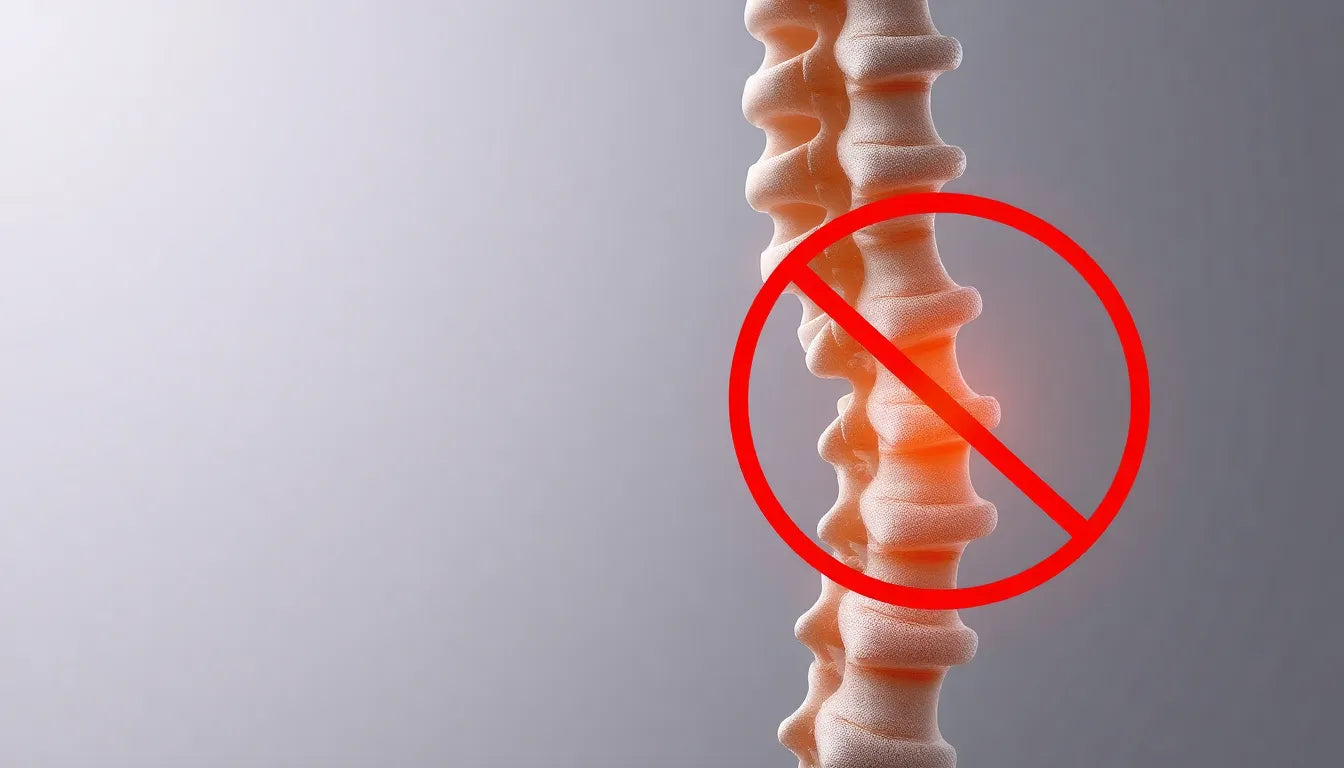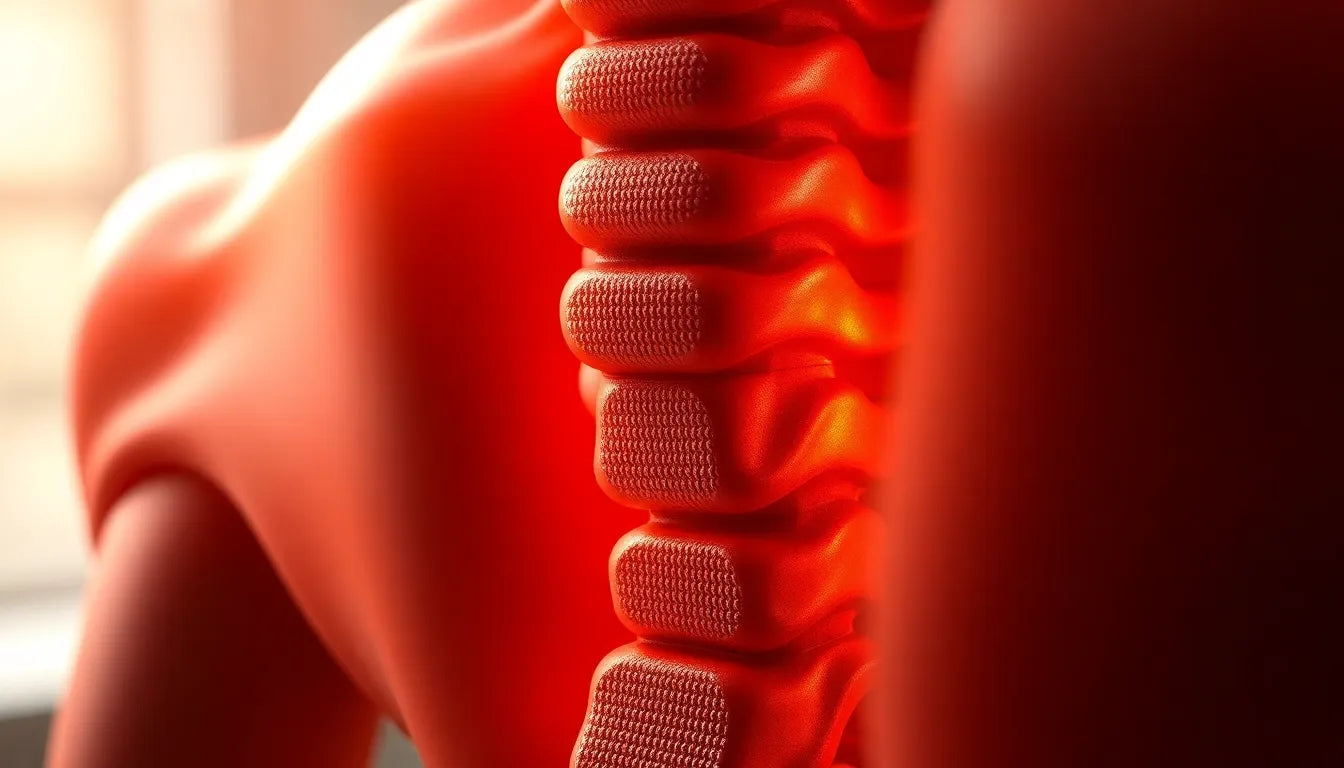When it comes to understanding pain, particularly in the hip area, the term "herniated disc in the hip" often leads to confusion. Many people mistakenly believe that a herniated disc could be located within the hip itself, which is not the case. Instead, a herniated disc occurs in the spine but can manifest as pain that feels like it's originating from the hip. This common misconception can lead to misunderstandings about the source of discomfort and the appropriate treatment needed.
what is a herniated disc?
A herniated disc refers to a condition where the soft, gel-like center of a spinal disc pushes through a tear in its tougher outer layer. This protrusion can irritate nearby nerves, leading to symptoms such as pain, numbness, or weakness. The pain can be particularly misleading when it radiates from the lower back to the hip area, mimicking hip joint issues.
The spine, particularly the lumbar region, is where herniated discs most commonly occur. This area of the spine is crucial because it supports much of the body's weight and is involved in many movements. When a disc herniates in this region, it can impinge on the nerves that travel to the hip, causing pain that feels as though it's coming directly from the hip joint.
understanding the misnomer
The term "herniated disc in the hip" is, therefore, a misnomer. The actual issue lies in the lumbar spine, not the hip itself. However, the pain experienced can be quite deceptive, leading individuals to believe their hip is the primary source of their discomfort. Recognizing this distinction is vital for effective diagnosis and treatment.
Understanding the connection between spinal health and hip pain can aid in identifying the true source of discomfort and seeking the right medical intervention. By acknowledging that the root of the problem often lies in the lumbar spine, individuals can avoid unnecessary treatments focused solely on the hip and instead address the underlying spinal issues.
This foundational knowledge sets the stage for exploring in-depth how a herniated disc in the lumbar spine can mimic hip pain, the diagnostic approaches to differentiate between the two, and the most effective treatment strategies. By dispelling the myth of a "herniated disc in the hip," individuals can better navigate their symptoms and pursue appropriate care, leading to more effective pain management and recovery.
the connection between herniated discs and hip pain
Understanding how a herniated disc in the lumbar spine can lead to hip pain is vital for accurate diagnosis and treatment. The lumbar spine, located in the lower back, is a common site for disc herniation. When a disc in this region herniates, it can compress or irritate nearby nerves. These nerves, primarily the sciatic nerve, extend down to the legs and hips. As a result, the pain originating from the lower back can travel along these nerve pathways, causing discomfort that feels as though it's emanating from the hip area. This phenomenon is known as referred pain.
Referred pain from a herniated disc often mimics hip joint problems, which can complicate the diagnostic process. Patients may experience symptoms such as sharp or burning pain, tingling, or numbness radiating from the back to the hip and even down the leg. It's crucial to understand this connection to avoid misdiagnosis and ensure that the underlying spinal issue is properly addressed.
diagnostic approach for herniated disc-related hip pain
Accurate diagnosis is essential to differentiate between true hip joint issues and referred pain from a herniated disc. The diagnostic process typically begins with a comprehensive medical history and physical examination. During the examination, a healthcare provider may perform specific tests to assess nerve involvement and identify the source of the pain.
Imaging tests play a crucial role in confirming the presence and location of a herniated disc. X-rays can rule out other causes of hip pain, such as fractures or arthritis, while MRI or CT scans provide detailed images of the spine to pinpoint the herniated disc and assess nerve compression.
Distinguishing between hip joint problems and referred pain is vital because the treatment strategies differ significantly. For instance, osteoarthritis of the hip might require joint-specific therapies, while a herniated disc would benefit from spinal interventions.
treatment approaches for herniated disc-induced hip pain
Once a herniated disc is diagnosed as the source of hip pain, a range of treatment options can be considered. Conservative management is often the first line of treatment. This includes short periods of rest to alleviate acute pain, the use of nonsteroidal anti-inflammatory drugs (NSAIDs) to reduce inflammation, and physical therapy to strengthen the muscles supporting the spine and improve flexibility.
Physical therapy is particularly beneficial as it focuses on exercises that target the lumbar region, helping to relieve pressure on the affected nerves and reduce referred pain. Patients often experience significant improvement in symptoms within weeks to months with consistent therapy.
If conservative treatments fail to provide relief, more invasive options such as epidural steroid injections may be considered. These injections can help reduce inflammation and pain around the affected nerves, offering temporary relief.
Surgery is generally reserved for severe cases where there is significant nerve compression or when symptoms persist despite other treatments. Surgical options like discectomy or spinal fusion may be necessary to alleviate pressure on the nerves and prevent further complications.
It's important to note that most patients with herniated disc-induced hip pain improve without surgery. A combination of physical therapy, lifestyle modifications, and ergonomic adjustments often leads to successful outcomes. Maintaining good posture, using ergonomic aids, and engaging in regular, gentle exercises can support recovery and prevent future episodes.
By understanding the connection between herniated discs and hip pain, individuals can seek appropriate care and avoid unnecessary treatments focused solely on the hip. This comprehensive approach ensures effective pain management and a better quality of life.
lifestyle modifications for herniated disc recovery
In managing herniated disc-induced hip pain, lifestyle modifications play a crucial role in recovery and prevention. Making small yet impactful changes can significantly enhance the healing process and reduce the likelihood of future issues. Maintaining good posture is essential; it helps alleviate pressure on the spine and supports overall spinal health. Ergonomic aids, such as supportive chairs and cushions, can further assist in maintaining proper alignment during daily activities.
Engaging in regular, gentle exercises is another key component of recovery. Activities such as walking, swimming, or cycling can improve flexibility, strengthen the core and back muscles, and promote overall well-being. These exercises help reduce the strain on the spine and minimize the risk of future disc herniations.
Weight management is also important, as excess weight can increase the burden on the spine, exacerbating symptoms. A balanced diet and regular physical activity can aid in maintaining a healthy weight, further supporting spinal health.
Incorporating these lifestyle changes not only aids in recovery but also empowers individuals to take an active role in managing their condition. By adopting these habits, patients can enhance their quality of life and reduce the risk of recurrent pain episodes.
Frequently Asked Questions
Can a herniated disc cause hip pain?
Yes, a herniated disc in the lumbar spine can cause pain that radiates into the hip area due to nerve compression in the lower back. This referred pain often mimics hip joint issues, making accurate diagnosis essential.
What are the treatment options for herniated disc-induced hip pain?
Treatment typically begins with conservative management, including rest, NSAIDs, and physical therapy. If these measures do not provide relief, epidural steroid injections or surgery may be considered for severe cases.
Is surgery a common treatment for herniated discs?
No, surgery is generally not common and is reserved for individuals with serious, persistent, or progressive symptoms. Most people experience improvement with conservative treatments.
How can I tell if my hip pain is from a herniated disc?
A thorough medical evaluation, including a physical examination and imaging tests such as MRI or CT scans, is essential to determine the source of hip pain and differentiate between joint issues and referred pain from a herniated disc.
What lifestyle changes can help manage symptoms of a herniated disc?
Incorporating ergonomic aids, maintaining a healthy weight, and engaging in regular exercises to strengthen the back and core muscles can be beneficial in managing symptoms and preventing further injury. Good posture and supportive work environments also contribute to overall spinal health.
By understanding the connection between herniated discs and hip pain, individuals can make informed decisions about their treatment and lifestyle, leading to effective pain management and improved quality of life.
Sources
- Mayo Clinic. "Herniated Disk - Symptoms and Causes."
- EmergeOrtho. "Herniated Disc: Causes, Symptoms, and Treatment."
- Penn Medicine. "Herniated Disc."
- Cleveland Clinic. "Herniated Disc: Causes, Symptoms, and Treatment Options."
- Kevin Pauza, MD. "Herniated Disc: Symptoms, Causes, and Treatment."
- OrthoInfo AAOS. "Herniated Disc - OrthoInfo - AAOS."
- Discseel. "Understanding Herniated Disc and Hip Pain."


















